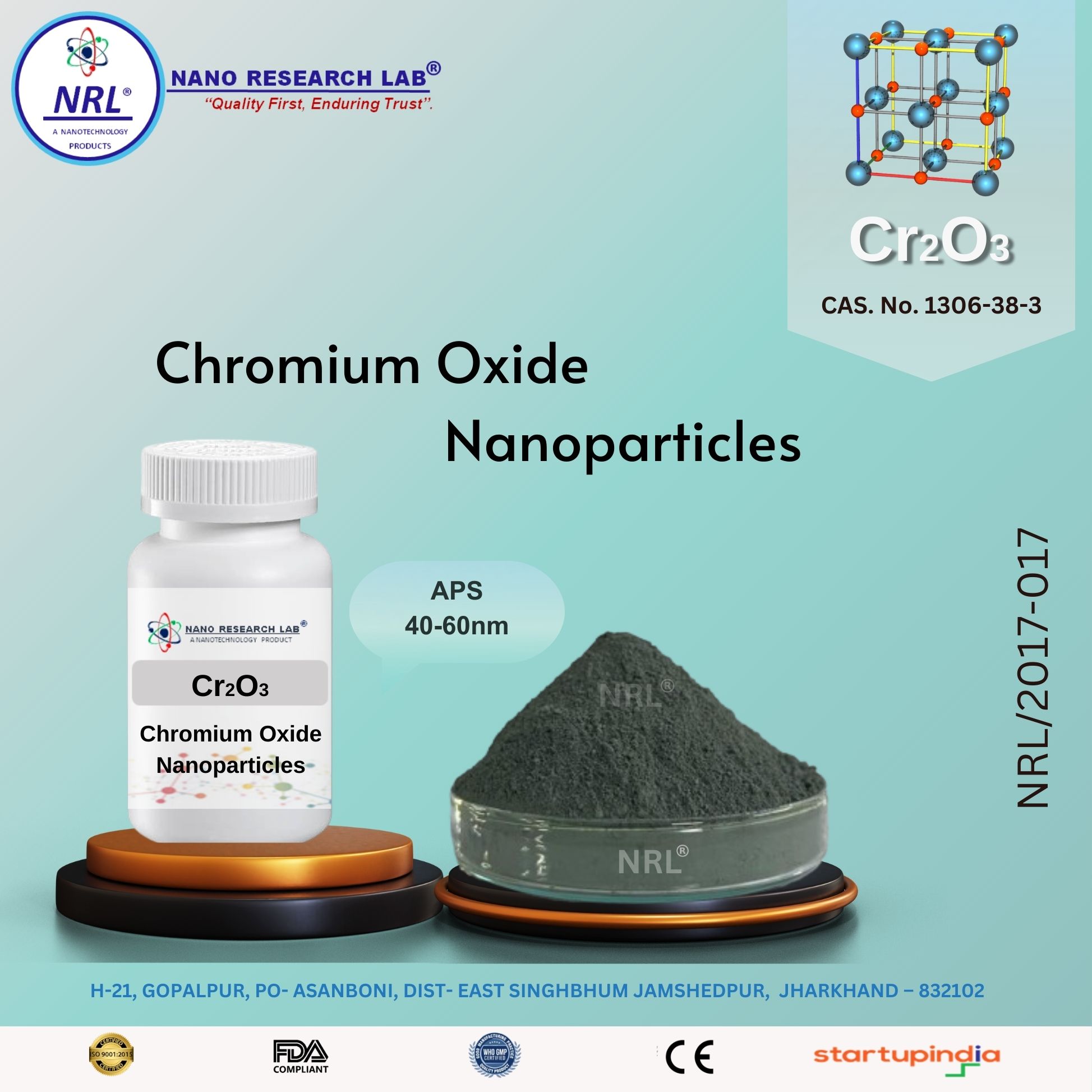
Chromium Oxide Nanoparticles/Nanopowder (Cr2O3, 40-60nm, Purity 99.5%)
₹1475.00
Chromium Oxide Nanoparticles / Nanopowder (Cr₂O₃, 40–60 nm, Purity 99.5%)
Technical Specifications
Property | Specification |
|---|---|
Chemical Name | Chromium(III) Oxide (Cr₂O₃) |
CAS Number | 1308-38-9 |
Molecular Weight | 151.99 g/mol |
Purity | ≥ 99.5% |
Appearance / Color | Fine Green Powder |
Particle Size (Average) | 40–60 nm |
Morphology | Irregular / Nearly Spherical |
Crystal Structure | Hexagonal (Corundum-type) |
Density | 5.22 g/cm³ |
Bulk Density | 0.8–1.2 g/cm³ |
Specific Surface Area (BET) | 30–60 m²/g |
Melting Point | 2435 °C |
Boiling Point | ~4000 °C |
Solubility | Insoluble in water; soluble in acids |
Band Gap Energy | ~3.4 eV |
pH (in suspension) | ~7.0 (neutral) |
Stability | Chemically stable, non-hygroscopic, thermally stable |
Key Features
High Purity (≥ 99.5%) ensuring superior chemical stability and performance.
Nanoscale Particle Size (40–60 nm) for large surface area and enhanced activity.
Excellent Thermal & Chemical Resistance suitable for high-temperature environments.
Stable Hexagonal Crystal Structure (Corundum Type) provides mechanical hardness and durability.
Strong Green Pigment: High color strength and lightfastness for coatings and ceramics.
Electrical & Magnetic Stability: Useful in electronic and magnetic materials.
Uniform Morphology: Ensures easy dispersion in composites and solvents.
Applications
1. Pigments & Coatings:
Used as a high-performance green pigment in paints, ceramics, enamels, and plastics.
Excellent weather, chemical, and heat resistance.
2. Catalysts & Chemical Processing:
Acts as a catalyst or catalyst support in oxidation and hydrogenation reactions.
Employed in organic synthesis and pollution control systems.
3. Ceramics & Glass Industry:
Provides stable green coloration and enhances hardness.
Used in refractories and advanced ceramic materials.
4. Electronics & Magnetic Materials:
Applied in thermistors, varistors, and magnetic storage materials.
Used in thin-film coatings for sensors and electronic devices.
5. Abrasives & Polishing:
Utilized as a polishing compound for metals and optical components (“green rouge”).
Provides fine surface finishing due to high hardness and stability.
6. Research & Nanotechnology:
Studied for photocatalysis, corrosion resistance, and nanocomposite applications.
Excellent candidate for advanced coatings and material science research.
